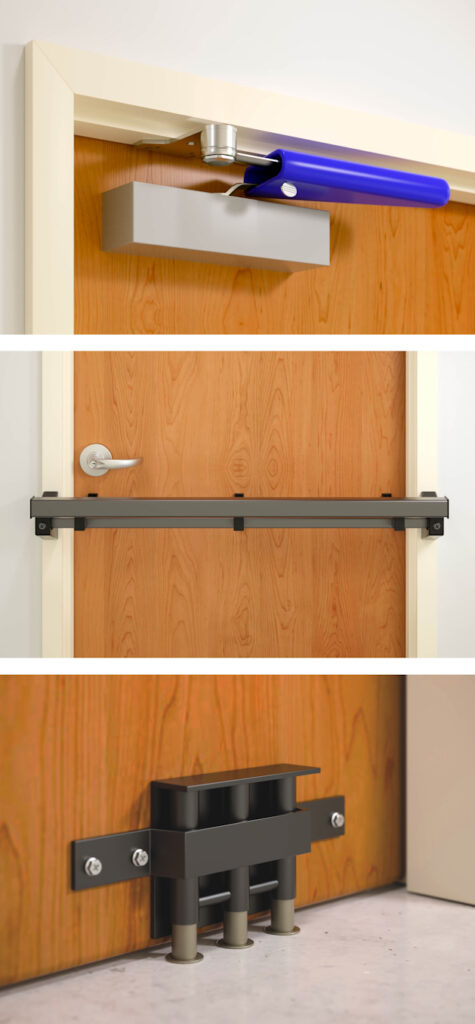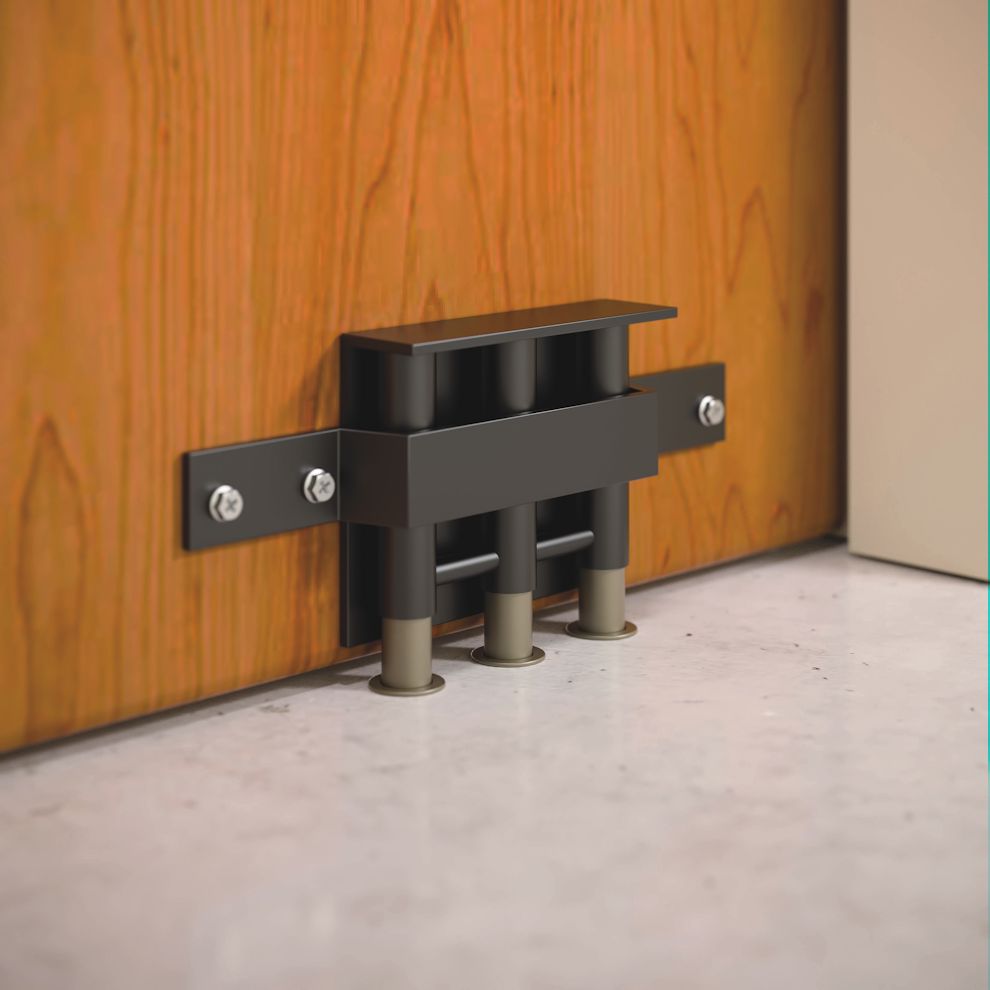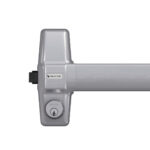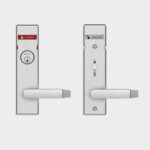This month’s Decoded question is a common one related to classroom doors in schools and other educational facilities. If you have a code question you’d like to see answered in my column, you can submit it by visiting iDigHardware.com/decoded-qa.
This post was published in Doors & Hardware

 This month’s Decoded question continues to arise in conversations about school security and safety:
This month’s Decoded question continues to arise in conversations about school security and safety:
Are classroom barricade devices allowed by the model codes and accessibility standards?
The simple answer is that traditional door hardware, as well as retrofit security devices, must be compliant with the codes and standards that have been adopted in the jurisdiction where a particular building is located. The model building codes and fire codes address the requirements that apply to doors in a means of egress, including classroom doors. The accessibility standards contain mandates that help to ensure that doors are operable by all building occupants, including people with disabilities. For door openings that are required to be fire rated, the applicable requirements are found in the model codes and a referenced standard – NFPA 80, Standard for Fire Doors and Other Opening Protectives.
The model codes and referenced standards include the following requirements that apply to classroom doors, and to almost all other doors in a means of egress. If a locking device or security method meets all of these requirements, it is compliant with these codes and standards. Note that additional state or local requirements may apply.
Unlatching the Door: The door must unlatch with one releasing motion, or two releasing motions where allowed by the adopted code. The International Building Code (IBC) and the International Fire Code (IFC) require all locks and latches on the door to be unlatched simultaneously with one releasing motion. Codes from the National Fire Protection Association (NFPA) have allowed two non-simultaneous releasing motions for classroom doors in existing schools since the 2018 edition; classroom doors in new schools must unlatch with one motion. The hardware that locks or latches the door must allow egress without the use of a key, tool, special knowledge or effort.
Operation of the Hardware: The releasing hardware must be mounted between 34 inches and 48 inches above the floor (or as further limited by state or local codes), and must be operable with one hand, without tight grasping, pinching, or twisting of the wrist. The accessibility standards limit the amount of force to operate the hardware; the ADA Standards for Accessible Design limit operable force to 5 pounds, and ICC A117.1, Accessible and Usable Buildings and Facilities limits rotational force to 28 inch-pounds and pushing/pulling force to 15 pounds.
Authorized Access: Beginning with the 2018 editions of the model codes, locked classroom doors must be openable from the outside with a key, credential, or other approved means. The intent of this requirement is to allow school staff or emergency responders to quickly enter a locked classroom during an active shooter event or at any other time that access is needed.
Panic Hardware: In educational and assembly occupancies, the I-Codes require doors that latch or lock to have panic hardware when serving an occupant load of 50 people or more. The NFPA codes apply this requirement to doors serving 100 people or more in these occupancy types. No other mechanical locking or latching hardware may be installed in addition to the panic hardware, and no modifications may be made to the panic hardware in order to install a retrofit security device.
Fire Doors: Some door openings are required to be fire door assemblies, to help deter the spread of fire. Each component of a fire door assembly, including all of the hardware and retrofit security devices, must be listed to ensure that the assembly will perform as designed and tested during a fire. In addition, NFPA 80 limits alterations that may be made to a fire door assembly in the field. Unauthorized modifications may void the labels of the opening protectives.
When we look at all of the model codes and referenced standards that apply to a particular school district, day care center, university, or other educational occupancy, we can compile a checklist based on these summaries. To comply with the model codes and referenced standards, doors in a means of egress serving a classroom must:
- Unlatch with one releasing motion, or two non-simultaneous releasing motions where allowed.
- Allow egress without the use of a key, tool, special knowledge, or effort.
- Be equipped with hardware that is operable with one hand, with no tight grasping, pinching, or twisting of the wrist.
- Have releasing hardware mounted between 34 inches and 48 inches above the floor (or as required by state/local codes).
- Meet the operable force limits of the applicable accessibility standard.
- Have a flush, smooth area with no protrusions on the push side face measured 10 inches up from the floor (manual doors only).
- Facilitate authorized access with a key, credential, or other approved means.
- Be equipped with panic hardware when the calculated occupant load is 50 people or more (I-Codes) or 100 people or more (NFPA codes), with no other mechanical locking devices.
- Be openable within the allowable force limits for manual doors, or be equipped with automatic operators.
- Comply with the requirements for fire door assemblies where opening protectives are required.
Some states and local jurisdictions have modified their adopted codes or passed legislation to allow barricade devices that may not be compliant with the list above. However, school administrators and facility managers are advised to carefully consider the potential impacts of the security methods they select. Two considerations that are particularly important are the need for evacuation, and the potential for unauthorized use of a security device.
When creating an emergency response plan, the ability to evacuate is crucial, as there are many hazards that could occur within a building. For example, while it may seem like fires in educational occupancies are uncommon today, they occur much more frequently than most people would guess. Based on the NFPA’s statistics on fires in educational properties, we can conservatively estimate that approximately 4,800 fires occur in U.S. schools and other educational facilities each year. In comparison, the Federal Bureau of Investigation (FBI) has reported an annual average of less than 4 active shooter events in educational occupancies between 2010 and 2020. While every school shooting is tragic, we need to balance our focus on safety as well as security. Locksets are readily available that provide the necessary level of security, without compromising life safety, fire protection, or accessibility.
Crimes such as bullying, assault, sexual assault, and theft are another hazard to consider with regard to physical security in schools. According to the National Center for Education Statistics (NCES), in 2019, students aged 12-18 experienced 764,700 incidents of nonfatal victimization in U.S. schools. Barricading has been used in school shootings and hostage-taking incidents in educational facilities in the past. When a barricade device is stored in a location where it is available to anyone, there is a risk of an unauthorized person deploying the device to secure a classroom and take hostages or commit a crime. Some of the retrofit products currently on the market could delay or prevent staff intervention or emergency response.
Going back to the question at hand…are classroom barricade devices code-compliant? A review of the checklist and the adopted codes will determine whether a particular security device or method complies with the codes and standards. These requirements are based on more than 100 years of lessons learned, and exist for the safety of building occupants. Lock the door – without compromising safety.
You need to login or register to bookmark/favorite this content.










Unauthorized Use:,,,,,
Kind of related
Around here,,, They still allow election voting to be conducted in schools,,,, While school is still in session,,,, and for some reason Elementary schools????
Come on there are plenty of state, county, city, vacant buildings, etc.,,, That can be used.
Just a side related rant